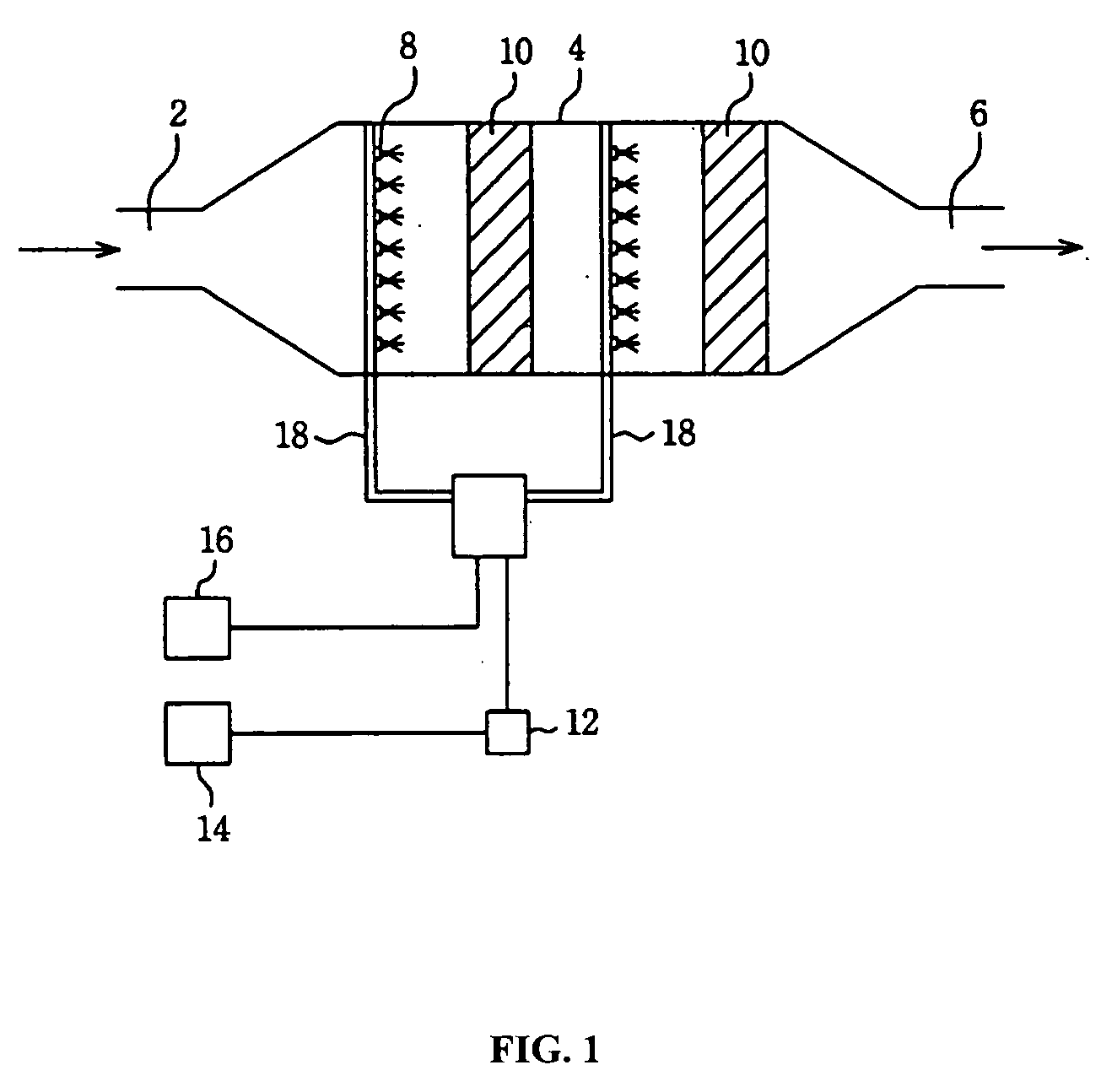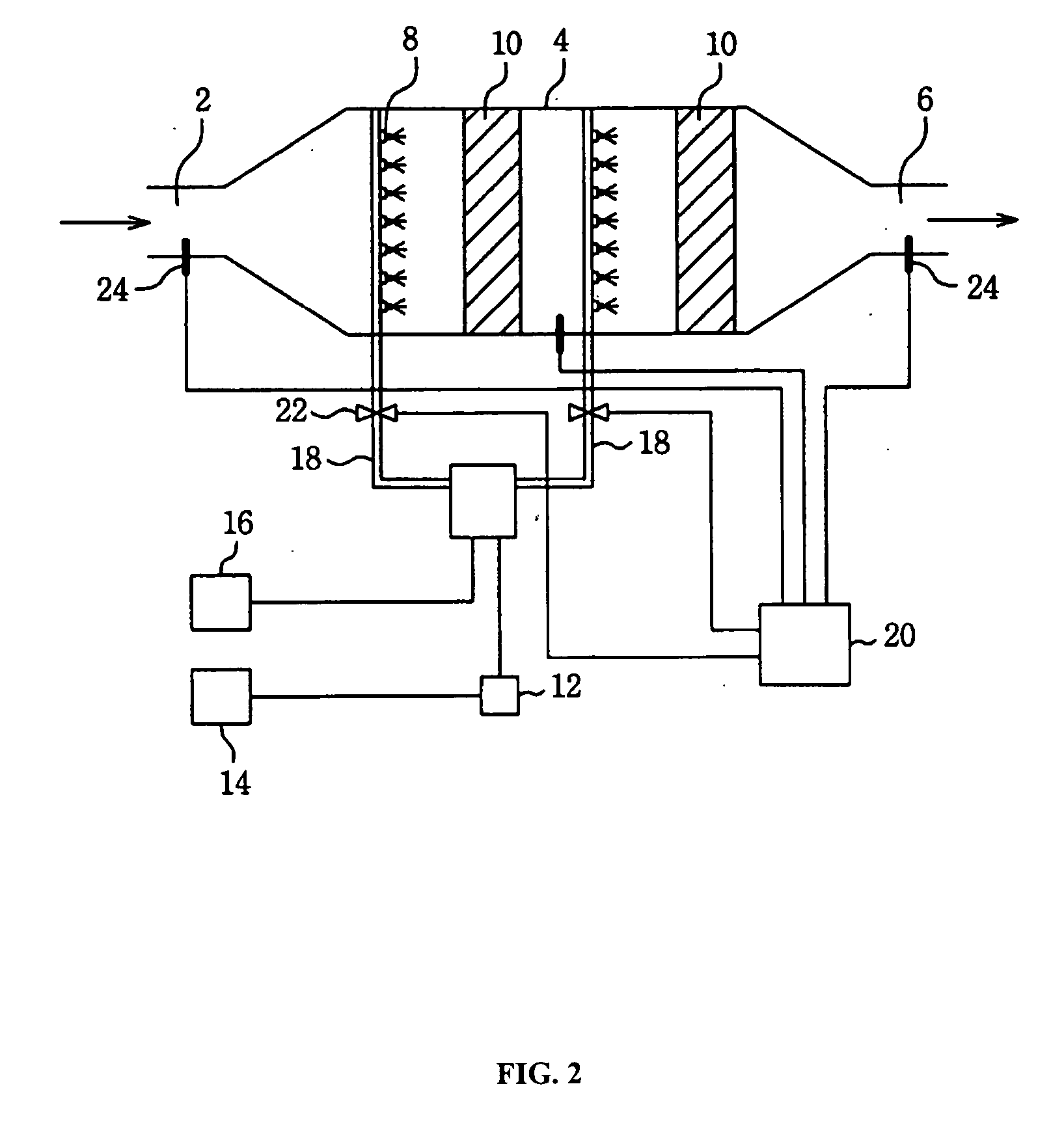Catalytic process for nitrogen oxides reduction by multi-injection and use thereof
a nitrogen oxide and catalyst technology, applied in physical/chemical process catalysts, separation processes, metal/metal-oxide/metal-hydroxide catalysts, etc., can solve the problems of difficult to effectively reduce nitrogen oxides, serious environmental pollution, and ammonia is a very toxic gas, so as to reduce the nitrogen oxides contained.
- Summary
- Abstract
- Description
- Claims
- Application Information
AI Technical Summary
Benefits of technology
Problems solved by technology
Method used
Image
Examples
example 1
[0074] Production of Non-Sulfuric Acid-Treated Catalytic Bed 1
[0075] Alumina [Spheralite 557, Exxons, France] was slowly added to ion-exchanged water with strong agitation to produce a homogeneous slurry.
[0076] The slurry was coated on a cordierite honeycomb body [Facktop Kocat, China] with a size of 15×15×10 cm and cell density of 200 cells / in2 (84×84 cells) so that a ratio of alumina to the cordierite honeycomb body was 0.111 g / cm3, and then dried at room temperature for 24 hours.
[0077] The dried honeycomb body was again dried at 120° C. for 4 hours and then heated at a rate of 10° C. / min to 600° C., and calcined at 600° C. for 2 hours.
[0078] The calcined honeycomb body on which alumina was coated was placed in a silver nitrate aqueous solution (AgNO3)[Hangyeol Gold, Korea] so that the silver content in the resulting honeycomb body was 2.1 wt % based on alumina, and then dried at room temperature for 24 hours.
[0079] The resulting honeycomb body was then dried at 120° C. for 4...
example 2
[0080] Production of Non-Sulfuric Acid-Treated Catalytic Bed 2
[0081] The procedure of example 1 was repeated with the exception that the ratio of alumina to the cordierite honeycomb body, was 0.123 g / cm3 instead of 0.111 g / cm3, and the silver content in the resulting honeycomb body was 5.0 wt % instead of 2.1 wt % based on alumina.
example 3
[0082] Production of Non-Sulfuric Acid-Treated Catalytic Bed 3
[0083] The procedure of example 1 was repeated except that the ratio of alumina to the cordierite honeycomb body was 0.149 g / cm3 instead of 0.111 g / cm3, and the silver content in the resulting honeycomb body was 6.0 wt % instead of 2.1 wt % based on alumina.
PUM
| Property | Measurement | Unit |
|---|---|---|
| molar ratio | aaaaa | aaaaa |
| temperature | aaaaa | aaaaa |
| size | aaaaa | aaaaa |
Abstract
Description
Claims
Application Information
 Login to View More
Login to View More - R&D
- Intellectual Property
- Life Sciences
- Materials
- Tech Scout
- Unparalleled Data Quality
- Higher Quality Content
- 60% Fewer Hallucinations
Browse by: Latest US Patents, China's latest patents, Technical Efficacy Thesaurus, Application Domain, Technology Topic, Popular Technical Reports.
© 2025 PatSnap. All rights reserved.Legal|Privacy policy|Modern Slavery Act Transparency Statement|Sitemap|About US| Contact US: help@patsnap.com



